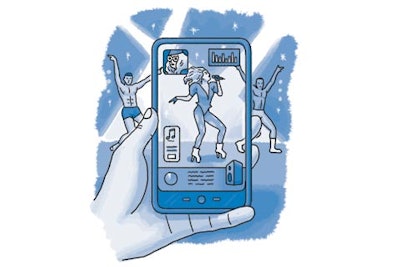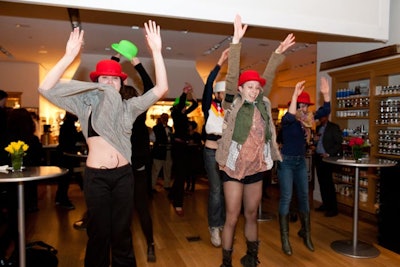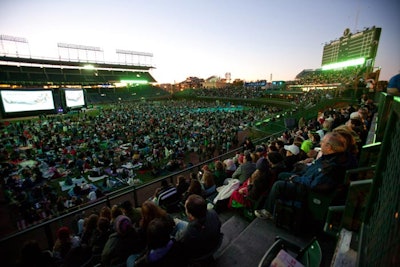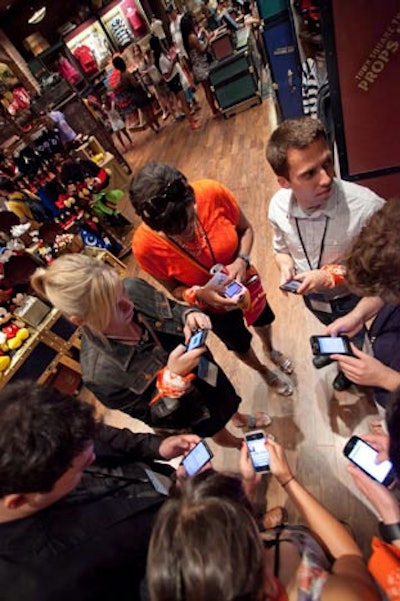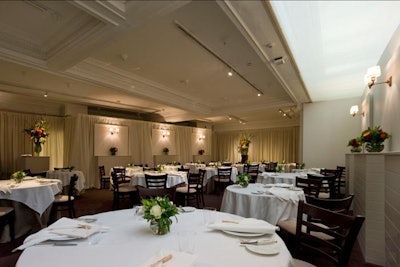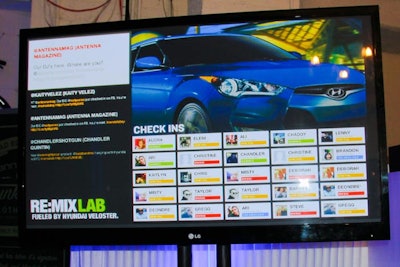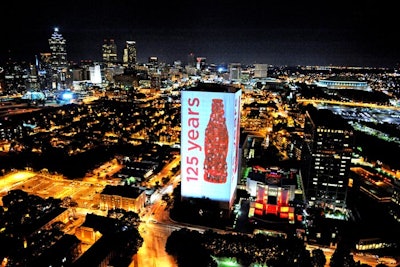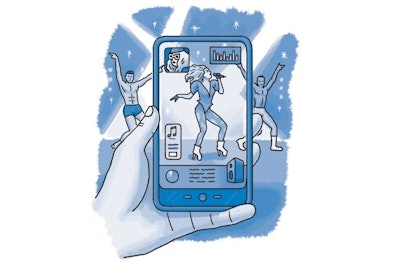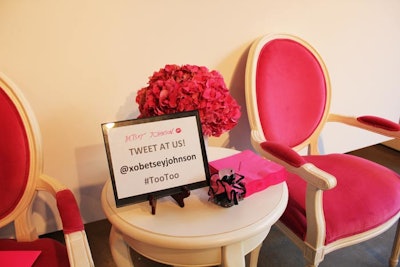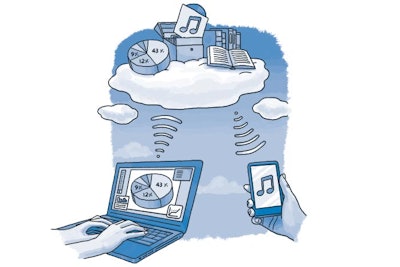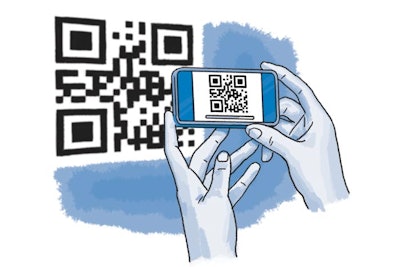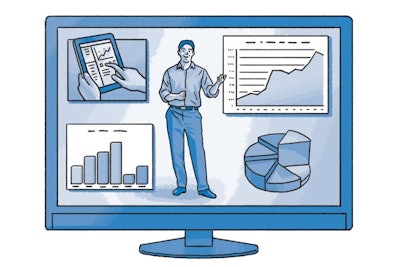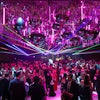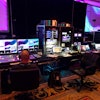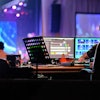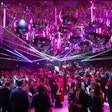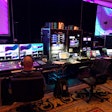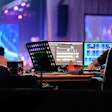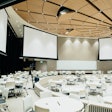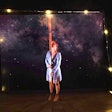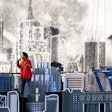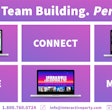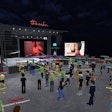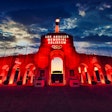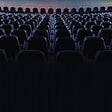A guide to the year’s biggest buzzwords and new concepts.
Augmented reality Think of this as the marriage of the real and virtual worlds. Augmented reality is the general term for instances when technology adds information to a real object or place. One of its most widely known uses is the virtual yellow first-down line seen in TV broadcasts of professional football.
British software giant Autonomy has created an augmented reality visual browser known as Aurasma. The app uses real-world images picked up by a smartphone’s camera to trigger searches and deliver content. During Fashion’s Night Out, online luxury retailer Net-a-Porter used the Aurasma technology in its pop-up window shop in SoHo in New York. When shoppers pointed their phones at vinyl images of clothing and accessories, the products would instantly appear on the device, and could be purchased from Net-a-Porter.
In June, CrowdOptic announced an app that lets fans get more connected to the live action at events by pointing their smartphones at an athlete or performer [see fig. 1] and viewing real-time information about the target, such as exclusive invitations, coaching insight, stats, ticket discounts, and marketing promotions. CrowdOptic’s display appears live in the phone’s camera viewer and also becomes a permanent part of the photograph or video, capturing all relevant information and promotions instantly, so offers and messages can be shared—and can spread virally—through photo and video sharing by fans.
Cloud Computing In its most basic sense, the “cloud” is the Internet—or, more specifically, its virtual storage capacity. So cloud computing refers to using resources and apps that are available through the Internet, instead of stored on your personal hardware device. Data in the cloud is mobile, transferable, and instantly accessible by multiple people and/or multiple devices. Storing your data in the cloud means you can access it from your desktop computer, your laptop, or your smartphone, and you can collaborate on documents with others who have been given the proper permissions [see fig. 5]. Gmail and Google Docs are two of the most widely used cloud-based tools, along with photo-sharing services such as Flickr and file-sharing services such as Dropbox.
During the planning stages for an event, cloud computing allows multiple people located all over the world to collaborate on notes, renderings, contracts, photos, and more. For businesses, cloud computing offers access to complex programs and services without an investment in expensive hardware and support staff. The cloud can also serve as long-term storage, an alternative to backing up to a traditional hard drive.
Daily deal event marketing Online discount providers Groupon and Gilt City have entered the world of event ticket sales.
As the local arm of Gilt Groupe, Gilt City now operates in 10 U.S. markets, offering members exclusive access to events and experiences. In March, Gilt City launched a partnership with sports and entertainment company AEG by offering members a choice of two exclusive V.I.P. packages to the Coachella Valley Music & Arts Festival, starting at $975 per person. The site is also getting involved in smaller events, such as selling tickets to the Miami International Wine Fair in September.
In May, Groupon joined forces with Live Nation to create GrouponLive, a distribution service for discounted tickets to concerts and sporting events. Live Nation reports that it sold more than 422,000 offers via Groupon in the second quarter. The company just launched a new service in the Chicago market: Groupon Presents promotes one local artist or event per month. It debuted October 1 with the 25th anniversary screening of Ferris Bueller’s Day Off at Wrigley Field [see fig. 3]. The company says it may expand Groupon Presents to other markets in 2012.
Flash event The term flash mob has been around since 2003 (according to Wikipedia), but the concept has evolved since then. What began as groups assembling in a public place for no specific purpose is now more likely to be used by brands looking to create buzz for their products, making the happening more an event than a mob. Flash mobs have become so common that some event industry watchers have come to consider them passé. In spring in New York and Los Angeles, MAS Event & Design included a flash mob in the launch of the Nespresso Pixie machine [see fig. 2]. Dancers wore colorful bowler hats, in a nod to the brightly colored coffee machines, as they performed.
Google+ Commonly referred to as “Google’s answer to Facebook,” Google+ launched by invitation only on June 28. One week later, it claimed 1.7 million users. Google+ opened to the public on September 20, and by mid-October the number of users had grown to 40 million, still far behind Facebook’s estimate of 800 million active users. The site is still in beta stage, and Google is continually tweaking and adding features. One element that could be helpful for anyone looking to publicize an event: Google+ is indexed by Google, meaning events and comments show up in search results. There’s also the “+1” button that can be added to any Web site. Its function is similar to a Facebook “like,” so “+1s” are visible to any or all circles on Google+. But there’s a bonus: As friends and contacts search on Google, they see any entries selected as “+1” right in their search results.
Hashtag The symbol known primarily to Americans as a number sign or pound sign (#) has gained new attention under its British name, the hash. On Twitter it is used to mark a keyword or topic in a tweet, making the text that follows the symbol a hashtag—for example, #events or #fashion. Clicking on a hashtag in Twitter leads to a page of the most recent tweets that include that particular hashtag, making for a simple way to sample lots of opinions or bits of information around a single topic.
Since it has become the norm for people to tweet from events—whether educational conferences or black-tie affairs—event marketers looking to increase their social media exposure have taken the lead by setting an event’s official hashtag and publicizing it on marketing materials [see fig. 4]. For example, SAP AG used #sapphirenow for its annual event of the same name; IMEX used #imexamerica11 for its recent conference in Las Vegas and has already established #imex-frankfurt12 as the hashtag for its event in May in Germany. (Otherwise, guests are left to make assumptions about the hashtag, potentially leading to multiple competing Twitter streams—#academyawards and #oscars, for example.)
Some hashtags have a short shelf life: #FNO, for the retail promotion of Fashion’s Night Out, peaked at 42,085 mentions (by aggressive PR folks?) just before 11 p.m. on Wednesday, September 7, according to social media search company Topsy. The following night—when people were busy attending Fashion’s Night Out activities around the country—there were 19,053 mentions with #FNO, and by September 9 it dropped to 2,046. (One note: Topsy only counts hashtag mentions that have been retweeted or contain a link.) Hashtags are spreading beyond Twitter: In January, photo-sharing service Instagram introduced them. And in June, Virgin America dedicated a new plane to its social media fans by naming— and labeling—it #nerdbird.
Hybrid events More and more companies are using technology to extend the reach of their events, often by adding virtual elements, creating what’s called a hybrid event—something that merges in-person and virtual components. According to Lynn Randall, managing partner of event consulting firm Randall Insights, a virtual event involves “people gathering around a focused topic of interest where none of the people are together in the same spot.” Hybrid events, she says, “have some people gathering together in a space, even just one location, and additional people joining through some sort of virtual technology” [see fig. 6].
During a session at M.P.I.’s World Education Congress in July, panelists agreed that for a successful hybrid event, planners must consider each audience separately—face-to-face at the main location, in remote locations (called pods) online—and determine how each will be integrated into the experience. Samuel Smith, managing director of Interactive Meeting Technology and co-founder of EventCamp Twin Cities, says he models the digital component on live television programming such as sporting events. “We designed the content in two-hour blocks, then in between those blocks, we created specific custom content for those [remote] attendees, so they would have a special experience and would not want to leave and check email or go do those 900 things they could do,” Smith says. In addition to thinking about the technical production of a hybrid event, Randall says event planners also need to make sure all speakers understand that they are speaking to a variety of audiences and develop strategies to engage everyone in their presentations. [See Virtual M.C.]
Hyperlocal event strategy The term hyperlocal has been buzzing for the last few years, applying to things like blogs and news sites that cover a small community, or marketing done through Twitter and other social media that is targeted at a specific audience. For events, hyperlocal means more than just using local vendors; it’s a deliberate effort to incorporate the culture and traditions of the host community into the event. Target did just that with the opening of its store in Harlem in July 2010. The party included an Apollo Theater-inspired stage on which noted Harlem entertainers like Doug E. Fresh performed and pop-up versions of three prominent Harlem eateries.
Location-based social networks This is the technical name for applications such as Foursquare and Gowalla, and the lesser-known Google Latitude and Loopt. Event planners are finding ways to encourage attendees to “check in” with these apps, since doing so creates exposure for the event. (Some people automatically post their check-ins to other social media accounts.)
Some events are finding other ways to incorporate the concept into activities. At Mashable’s first Mashable Connect conference at Walt Disney World in Orlando, the company created a competition that required teams of attendees to check in on Gowalla at 17 different locations around the Magic Kingdom and post photos on their social networks with the hashtag #MashCon [see fig. 7]. Participants earned special Gowalla pins and stamps created specifically for the event. There are also apps that expand the functionality of these networks. For example, Sonar pulls Foursquare location data and overlays that with friends and interests from Facebook, Twitter, and LinkedIn, so event attendees can instantly see which of their contacts are at the same check-in location.
Near-field communication This technology, commonly referred to as NFC, allows devices equipped with special chips to communicate with each other when in close range (as in a few centimeters). The devices might be two NFC-enabled phones exchanging data such as photos or contact information, or a phone communicating with a reader for instant wireless payments. For the event industry, this means a simple swipe of a smartphone could process a donation to a nonprofit or purchase a conference registration. NFC-enabled phones can also read smart tags embedded in objects such as T-shirts, posters, and retail products, creating opportunities for brand marketers to share product information with consumers.
Dallas-based OTA Training is hosting NFC Bootcamps in cities around the country to teach companies how to use the technology for marketing. The company kicked off the educational series in September by displaying the first NFC digital billboard in Times Square. Also in September, Google debuted Google Wallet, an app that uses NFC technology to turn a smartphone into a mobile payment system. Nokia has launched NFC Hub, an online store for custom NFC products like tags, posters, and stickers that businesses can use to encourage people to interact with their brand.
Pop-up restaurant First there was the pop-up shop, now there’s the pop-up restaurant. Thomas Keller brought a temporary version of his French Laundry restaurant (staffed by 15 members of his Napa Valley team) to Harrods in London for a 10-day run in early October [see fig. 8]. The restaurant served nine-course lunches and dinners to waiting-list crowds. Other versions pop up, then down, then back up again: KitchenBar first appeared for 10 nights in November 2010 inside an existing Tampa restaurant that closed each day at 2 p.m. There have been two more KitchenBar pop-ups since then, all limited engagements at different existing venues around Tampa, all fueled by social media. “The only way we’ve done anything is through Facebook. And then the traditional media have picked up on it,” says KitchenBar creator and chef Jeannie Pierola. “There’s nothing more pervasive in our culture right now than foodie culture.” Brands have piggybacked on the trend, sponsoring temporary restaurants that can double as party venues.
QR codes More formally known as quick response codes, these are the most popular form of 2-D bar codes, which seemed to turn up everywhere in 2011. In fact, a subsidiary of Toyota created these scannable images of small black squares on a white background in 1994 to track vehicles during manufacturing. Now they’ve entered the mainstream: A study by comScore Inc. found that in June 2011, 14 million mobile users in the U.S. scanned a QR code on their mobile devices. These are simple to use, too: There’s no cost to add a QR code to printed materials, and any smartphone can scan them for free, with the right app.
To create a QR code: Determine what the code will link to—i.e., a Web site, text, map, phone number, etc. Then select a QR-code generating site, such as Kaywa, Qurify, or Delivr, to create it. Once the code is created, it can be shared as a link or saved as an image to be used on flyers, Web sites, business cards, and so forth.
To read a QR code: Many smartphones now come with 2-D readers, and free apps are widely available for those that don’t. Open the reader, then point the smartphone’s camera at the code [see fig. 9]. In a matter of seconds, the QR code is scanned and decoded, and the link or other information is instantly loaded onto the phone.
Event marketers are incorporating QR codes in a variety of ways. They can serve as a replacement for printed marketing materials at trade show booths. (Bonus: Make it fun for attendees by creating a contest or rewarding them for scanning your code.) They can be projected onto a screen during a presentation so the audience can easily download speaker notes. At fund-raising events, they can instantly link attendees to a Web site for donations. And at large events, codes on the name tags can provide the event’s menu, map, program, and more.
Microsoft has created its own form of a 2-D bar code known as a Microsoft Tag. Data is encoded using clusters of colored triangles instead of square black pixels.
The sharing economy Good-bye consumption, hello sharing? That may not be too far-fetched, as technology facilitates the execution, and mind-set, of sharing everything with everyone. In an April article in Fast Company, senior writer Danielle Sacks described the evolution of the sharing economy: “Spawned by a confluence of the economic crisis, environmental concerns, and the maturation of the social web, an entirely new generation of businesses is popping up. They enable the sharing of cars, clothes, couches, apartments, tools, meals, and even skills. The basic characteristic of these you-name-it sharing marketplaces is that they extract value out of the stuff we already have.”
The concept has caught the attention of every- one from entrepreneurs to big brands. Daimler launched Car2go in Austin in 2009. Anyone in need of a vehicle can use a mobile app to locate one of the fleet’s Smart cars parked around town and rent it spontaneously, without having to commit to a specific return time or location. Airbnb is a start-up launched by three college friends in 2008 that connects travelers with people who have spaces for rent. But now it goes beyond vacation homes to include rooms, nearly 200 boats, and even sofas in living rooms. As of August, the company reports it has listings in 17,000 cities and 190 countries.
The concept of sharing extends past products and services to information and events. With Facebook, Twitter, Delicious, Digg, and StumbleUpon, anything can be shared instantly. Event marketers now have multiple options to promote their events to a worldwide audience. Sharing also takes place through online networking groups, such as the BizBash Event Planners Gather group on LinkedIn, where more than 17,000 industry professionals seek and offer advice.
Social media aggregator This is a Web site or software application that amasses information from multiple sources. At conferences, an aggregator can put all social media activity related to the event from various platforms into one online site, which is useful for both attendees and people around the world who may want to know what is happening at the event [see fig. 10]. At I.B.M.’s Lotusphere conference in January, the aggregator provided a live feed of Twitter comments, Flickr photos, blog posts from attendees, live videos of keynote speakers, and taped interviews, all on a single landing page. I.B.M. director of marketing Kathy Mandelstein says the site received more than half of its traffic from outside the U.S., giving the conference “much broader reach globally.”
Strategic meetings management This concept has been around for several years within big corporations and is now gaining prominence among associations and nonprofits. M.P.I.’s FutureWatch 2011 report declared, “SMM is critical, not optional.” Betsy Bondurant, president of Bondurant Consulting, says strategic meetings management can help companies save money and create more effective meetings: “It’s not strategically managing one meeting. It’s looking at all of your spend, which could be hundreds of meetings, and looking at it in a holistic basis and putting in processes to manage and control it, to achieve measurable objectives, and to avoid risk for the organization.” In 2009, the Global Business Travel Association launched a professional development program that awards a certificate in strategic meetings management.
Sustainable events Interest in green or eco-friendly events has grown steadily in the past several years. In the meantime, the concept of sustainable events has reinforced the idea of thinking about an event’s impact on the environment and on other areas. At M.P.I.’s World Education Congress in July, Fiona Pelham, managing director of Sustainable Events Ltd., emphasized that event industry professionals need to understand and address all three areas of sustainability: economic, environmental, and social. Economic sustainability refers to staying within budgets and making a profit; environmental relates to waste and energy usage; and social looks at how you work with internal and external audiences. The term has certainly been in the spotlight this year, thanks to the development of both the APEX/ASTM Standards and ISO 20121, an international management system for sustainable events that is expected to be finalized next year to coincide with the London Olympics.
Sustainable event standards The industry’s first comprehensive guidelines for environmentally sustainable events are being created through a partnership of the Convention Industry Council’s APEX initiative and ASTM (an international standards developing organization) in collaboration with the U.S. Environmental Protection Agency and the Green Meeting Industry Council. The suite of standards, in nine individual sectors, offer specific, measurable criteria covering all aspects of event planning and management: accommodations, audiovisuals and production, communication and marketing, destinations, exhibits, food and beverage, meeting venue, on-site office, and transportation. The standards are in the final stages of approval and will be complete in 2012. The Green Meeting Industry Council is developing continuing education workshops that will be rolled out once the standards are finalized.
3-D projection mapping Part advertising, part entertainment, 3-D projection mapping is one of the hottest trends in marketing. In most instances, it involves large video projections on buildings, although there are also examples of projections on other surfaces, such as trees. In May, Coca-Cola celebrated its 125th anniversary with a 3-D projection covering all four sides of its 26-story Atlanta headquarters [see fig. 11]. Obscura Digital created the two-hour show, which incorporated real-time technology to integrate live components, such as fan photos from Twitter, Facebook, and other social media sites. Ralph Lauren created projections for its New York and London stores to mark the 10th anniversary of RalphLauren.com in 2010. The company described it as “the ultimate fusion of art, fashion, and technology in a visual feast for the five senses.” The reach of a projection mapping display goes far beyond the people who see it in person: Brands share videos of the production on their Web sites, and fans share those through their social networks.
Virtual M.C. As more events include an online component, a new role is taking shape: that of the virtual M.C. [see fig. 12]. Emilie Barta is widely credited with coining the phrase after serving as the online host during EventCamp NYC in February 2010. She describes the role as “making the virtual audience feel welcomed, taken care of, and actively engaged in the hybrid event, so that every audience member is sharing in the same experience no matter where they are located.” Barta does this by being part energetic host (to engage online and satellite audiences and keep them from stepping away from the event) and part instructor (to show attendees how to use the technology to ask questions and take part in discussions). A virtual M.C. is available from the moment an event goes online, to offer insight into what is happening at the physical event, as well as to monitor tweets and comments and to direct questions.
White space wireless White space is the term for the unused airwaves between broadcast television channels. In September 2010 the F.C.C. unanimously approved the use of broadcast white space as unlicensed wireless spectrum. White space Wi-Fi offers three critical advantages over traditional Wi-Fi: greater range (measured in miles instead of feet); the ability to travel through obstructions such as walls (no more signal loss when stepping into a building); and more than double the speed. All of this means bigger chunks of data can travel faster than ever before. Microsoft is testing white space wireless at its Washington campus and also in a project in England. While conference centers and other venues haven’t announced plans to incorporate this, we should be hearing a lot more about it in 2012.
